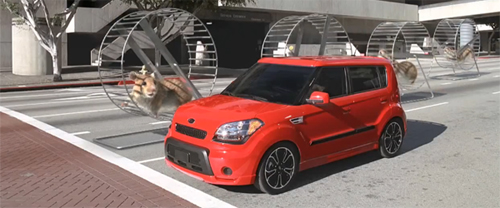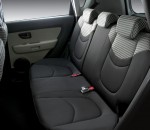
My God, I never thought I would be saying that a Kia looks good but here goes. The Kia Soul looks nice. Okay, there, I said it. So what!
The Kia Soul is a definite contender. I mean, look at the new commercial of the Kia Soul. It literally has Soul! It has the looks, the right price and a great warranty to complete the package. I have not driven one of these things personally but I plan on it very soon.
What is your scoop on the Kia Soul? Does it do it for you if you were shopping for a vehicle in that particular segment? The price of Souls are going for cheap these days. Look at President Obama, his morals are somewhat shaky right now according to many conservatives. But enough about politics, this is a Soul that’s in the balance that we are talking about here.
Kia has come a long way while Hyundai has really helped them over the past few years. That was probably the best thing for Kia to be a part of Hyundai or they would not even have a Soul. The Kia Soul looks to give the Scion xB and Nissan Cube a run for its money… and when I say money, I only mean about $14 grand of it.







2010 Kia Soul Specs:
Check out the popular hamsters Kia Soul Commercials below and you tell me is it worth the price!
Price: Starting at 13,300 for base 1.6L model and tops out around $17,000 for the Sport 2.0L
Type: Compact Wagon
Where Built: South Korea
EPA Class: Small Station Wagon
Dimensions
Exterior
Length: 161.6 in. Width: 70.3 in.
Height: 63.4 in. Wheel Base: 100.4 in.
Interior
Maximum Seating: 5
Performance Data
Base Number of Cylinders: 4 Base Engine Size: 2 liters
Base Engine Type: Inline 4 Horsepower: 142 hp
Max Horsepower: 6000 rpm Torque: 137 ft-lbs.
Max Torque: 4600 rpm Drive Type: FWD
0-60mph: 8.8 seconds
Fuel Data
Fuel Tank Capacity: gal.
EPA Mileage Estimates: (City/Highway/Combined)
Manual: 24 mpg / 30 mpg / mpg



























